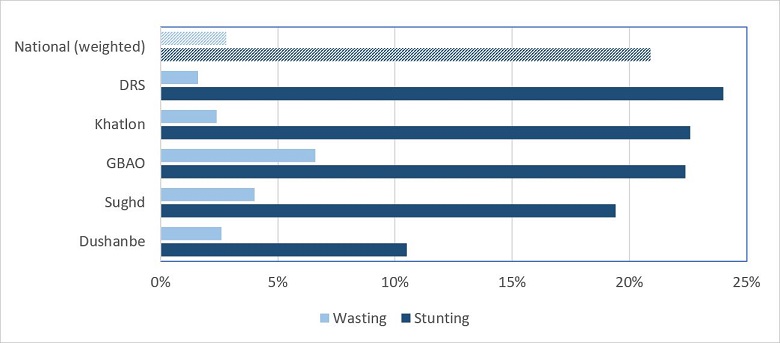Inadequate nutrition during the first few years of a child’s life can have destructive impacts that are irreversible, such as permanent cognitive impairment. Indeed, malnourished children are at much higher risk of death. Stunting and undernutrition in childhood are usually the result of several contributing factors related to environment, food, hygiene, and health.
A recent World Bank study found that more than 20 percent of children under the age of five in Tajikistan are stunted. Children living in Tajik households that do not consume a diverse and high-calorie diet, that do not have access to clean water, and which live in an inadequate sanitary environment, are most at risk of stunting.

